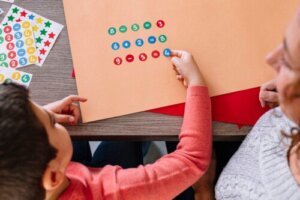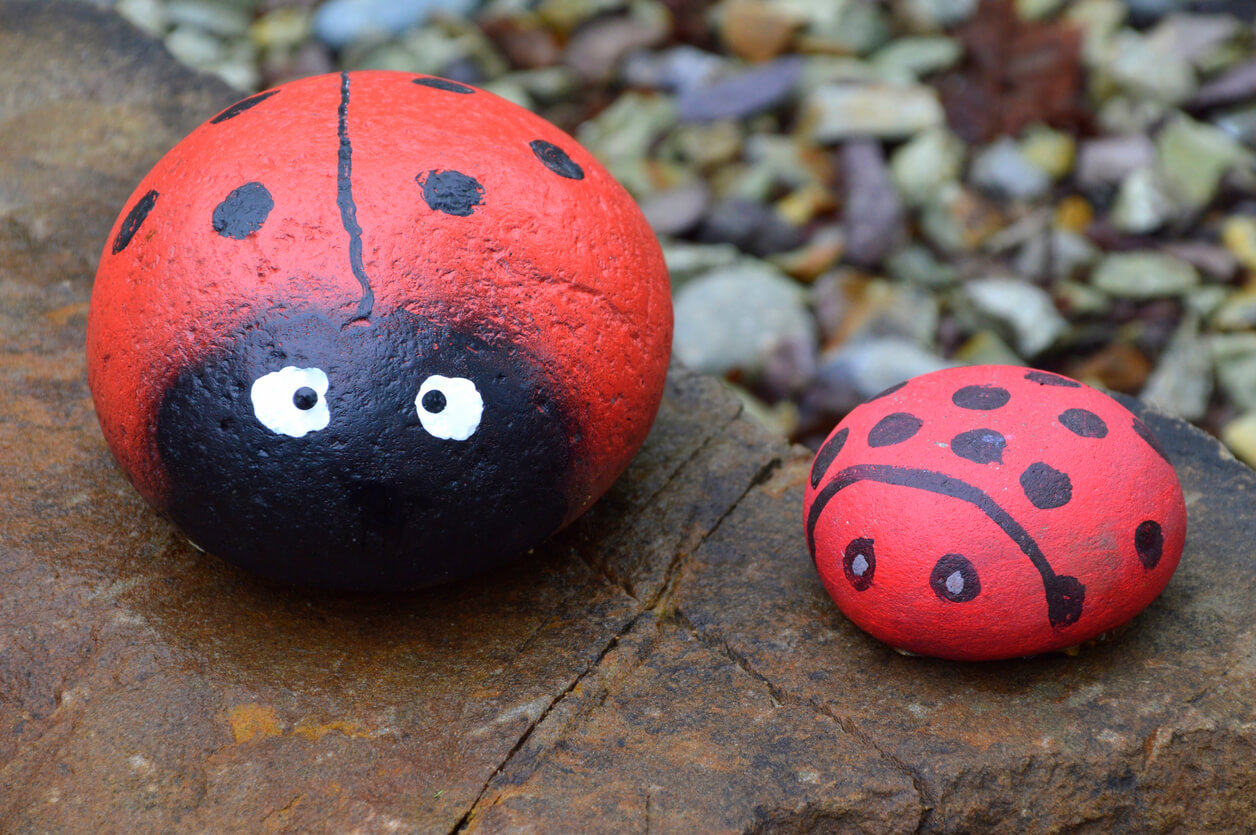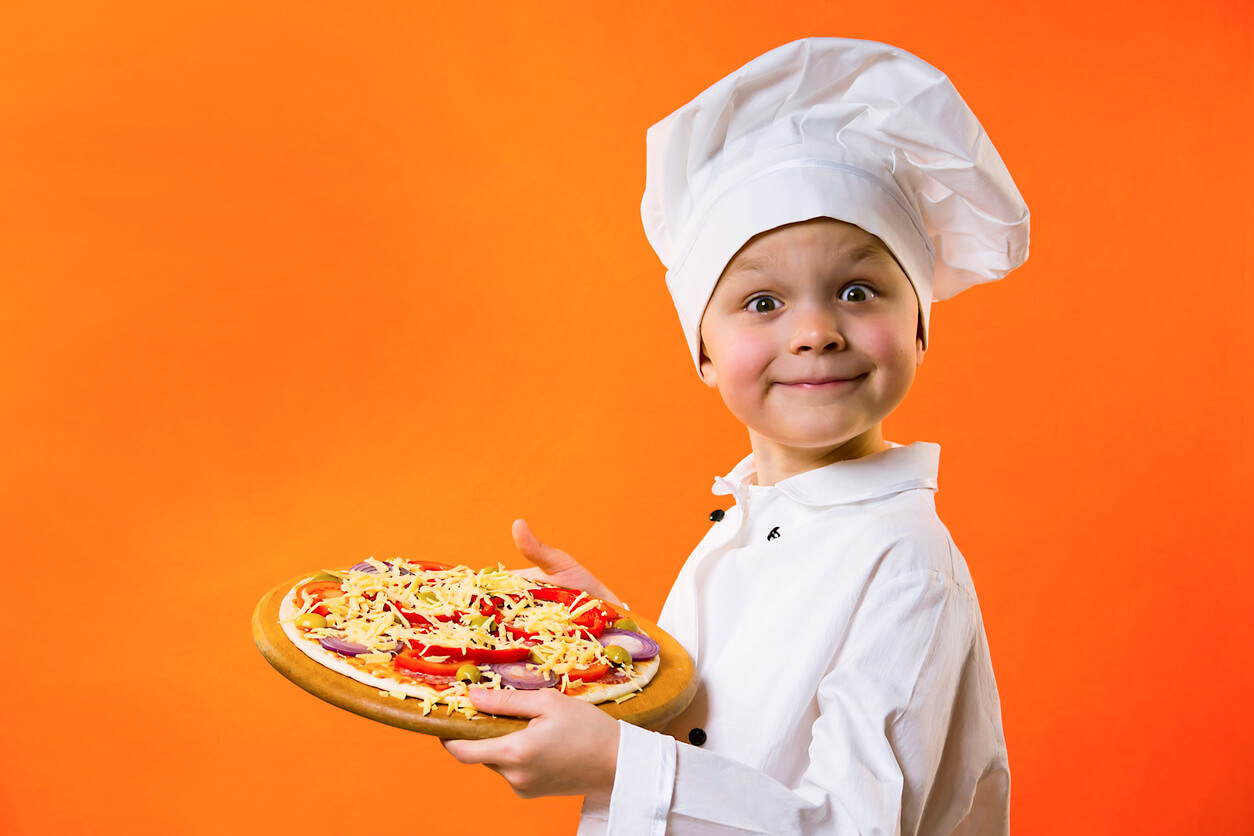3 Crafts to Teach Mathematics to Children

Working with your hands bring multiple benefits, among which the development of motor, emotional, and cognitive skills stands out. For these reasons, today we’ll share with you these crafts to teach mathematics to children, an effective activity that stimulates the logical-mathematical thinking of infants while allowing them to play and have fun.
So, let’s use our ingenuity and teach them how, with their own hands, they can learn to order, enumerate, experiment, observe, compare, and make mathematical relationships. What do you think of the idea?
3 crafts to teach mathematics to children
We know how important mathematics is in our lives and how good it is for children to learn it progressively according to their age.
So, to introduce children to this wonderful world where numbers are the main characters, we can resort to different strategies, such as playful activities and crafts. If we add these two resources, we can go further and invite little ones to create different games with their hands, even with materials that we have at home.
The goal with these crafts to teach math to children is for them to be fun, dynamic, and above all, didactic.
1. The ladybug game: Counting polka dots to learn math
Ladybugs are those colorful insects that children are fascinated by. They’re red or orange with beautiful polka dots on their wings. How do we learn math with them?
Materials
- Red or orange cardboard
- Scissors
- Ruler or round mold to draw circles
- Black marker
- Glue
- 16 inches of soft wire
- Black modeling clay or play dough

Step by step instructions
- On the colored cardboard, draw 10 circles of approximately 2 inches in diameter. These will be the bodies of the ladybugs.
- Cut out the circles.
- Cut the thread or wire into 20 pieces that are each about 1 inch long.
- Glue the wires in pairs as antennae on each colored circle.
- Write a number on each of the ladybugs with the black marker starting with 1, the next one write the number 2, and so on up to 10.
- Knead the play dough into 55 small balls.
- It’s time to learn math! The children must glue onto the ladybugs the number of balls that each one indicates, according to the number marked. These will be the polka dots, which are the simplest ways to associate the number with the quantity.
- Finally, ask them to order the ladybugs from the one with the fewest spots to the most “freckled” one, so that they begin to have a notion of the order of numbers.
Pizza game: Learning to add and subtract
Here’s one more example that mathematics is part of everyday life. Do you want to know how? It’s as simple as when you cut pizza into equal-sized slices.
It’s time to go one step further because, with this craft, we can teach subtraction when we pass out the slices, as doing so decreases the amount of pizza on the platter!
Materials
- Cardboard
- Pizza pan
- Colored pencils
- Scissors
- Ruler
- Cardboard cutouts
- To decorate: Glitter, beads
- Pencil, paper, and an eraser
Step by step instructions
- Place the pizza mold on the cardboard and with the help of a pencil, mark the circumference and cut.
- With the help of a ruler, mark two lines to divide the circle into four. Then mark again so that the 8 portions are equal.
- Paint with colored pencils and decorate with beads, glitter, and cardboard cutouts such as olives, ham, or peppers. This way, you’ll add fun to the educational experience.
- Cut the portions. It’s time for lunch and the game is on: There are 8 delicious slices in the pizza pan.
- One child serves himself a slice and now they have to count the amount left in the pan.
- Another participant removes another portion of food and must count the remaining portions in the pan again.
- Continue in the same way applying the same reasoning and counting each time how many are left? Continue until you reach zero.

A Hint
Make a note of the mathematical operation on paper so the child can associate the abstract (counting on paper) with the concrete (pizza slices).
3. The Spaghetti Porcupine
This is one of the most fun and easy math teaching crafts for children.
Materials
- Colored play dough
- Spaghetti
- Beads with big holes
Step by step instructions
- Mold the dough to form the body of the little animal in the shape of a shell.
- Stick the spaghetti into the dough to look like the anima’s spines.
- Pass the beads through the spaghetti and teach them to add when they put them on and to subtract when they take them off.
Crafts to teach mathematics: Take advantage of them and enjoy them with children
Several authors and scientific studies have concluded that human beings have mathematical skills prior to the stage of formal education. In addition, through various activities, children can be prepared to reach elementary school with a solid foundation. This is called mathematical readiness.
Games and crafts to teach mathematics are part of this stage and are two highly effective resources that have the added bonus of being fun for children.
According to what was published in a research paper in the Revista Pedagógica de la Universidad de Cienfuegos, children progress in their mathematical learning, starting from natural competences, to then go through training and advance towards real mathematics:
The learning stages that allow children to progressively acquire logical thinking, each time wider and deeper, go from manipulation to symbolic representation and then to generalizing abstraction.
Herein lies the importance of crafts for teaching math: To prepare your child for further development. So take advantage of them and organize these projects to support your child’s learning and enjoy them as a family!
All cited sources were thoroughly reviewed by our team to ensure their quality, reliability, currency, and validity. The bibliography of this article was considered reliable and of academic or scientific accuracy.
- Brito, E. (2020) Aprestamiento Matemático en Inicial. Técnicas de aprestamiento para el aprendizaje del cálculo. Universidad Técnica de Ambato Facultad de ciencias humanas y de la educación Psicopedagogía. Disponible en: https://es.calameo.com/books/00616700985b9bf5ce688
- Espinoza Cevallos, C., Reyes Cedeño, C., Rivas Cun, H. (2019) El aprestamiento a la matemática en Educación Preescolar. Conrado. Revista Pedagógica de la Universidad de Cienfuegos. Disponible en: http://scielo.sld.cu/scielo.php?script=sci_arttext&pid=S1990-86442019000100193
- Santoyo, S. (2020). 10 beneficios de las manualidades para niños. Aula Planeta. Recuperado de: https://www.aulaplaneta.com/2020/10/15/firmas-invitadas/10-beneficios-de-las-manualidades-para-los-ninos/
This text is provided for informational purposes only and does not replace consultation with a professional. If in doubt, consult your specialist.








